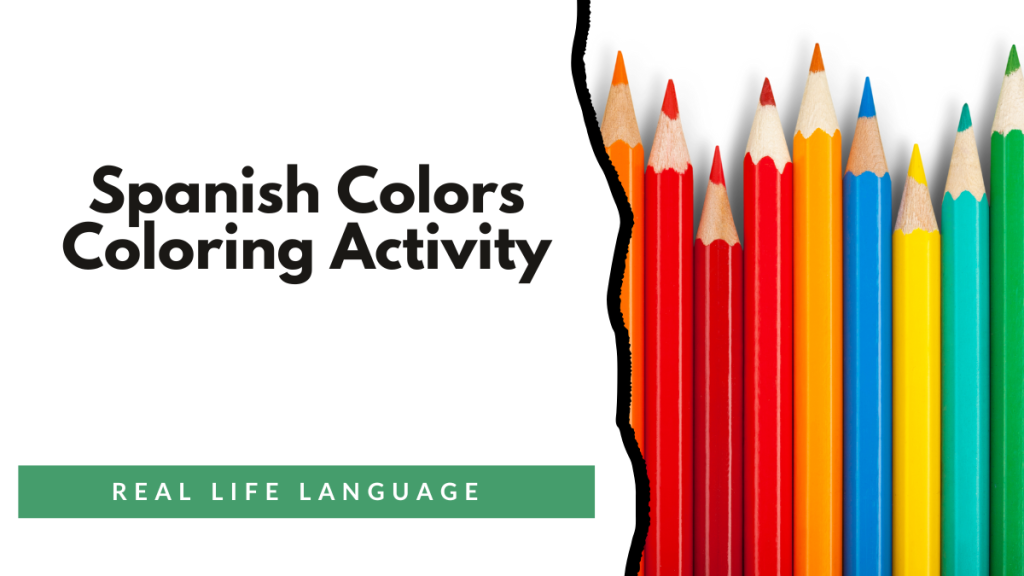Review Lessons
See some ideas to get students comfortable with Spanish for the new school year.
Course Level: Spanish 2
Proficiency Range: Novice High → Intermediate Low
Length: 10 Lessons (block- 90 minutes +) or 20 (50 minutes or less)
Essential Questions:
How do I describe my daily routine and surroundings?
What are common elements of community life in Spanish-speaking cultures?
Lesson 1 – Daily Routines Review
Objective: I can describe my morning routine using reflexive verbs.
Warm-up: Daily Routines Chat Mat
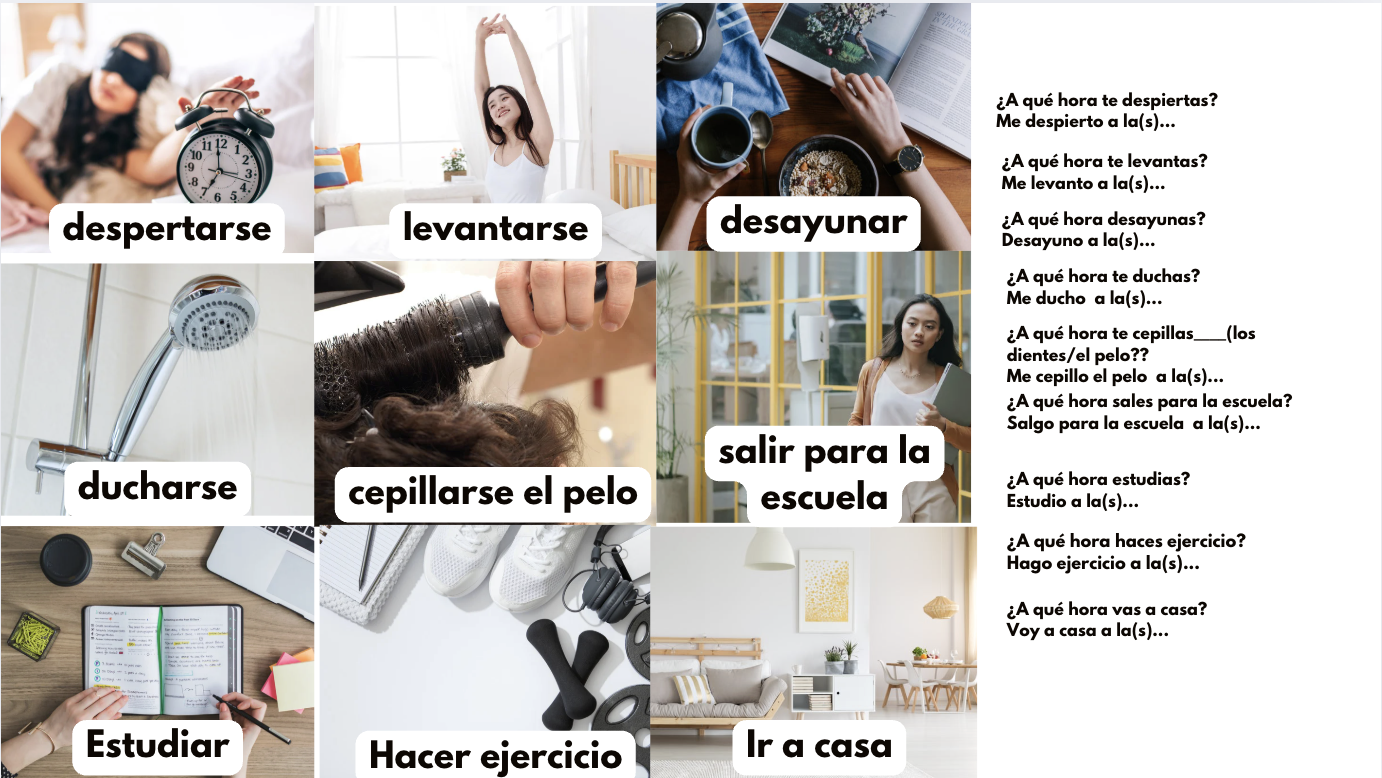
Input: Watch NEEM daily routines video Activity:
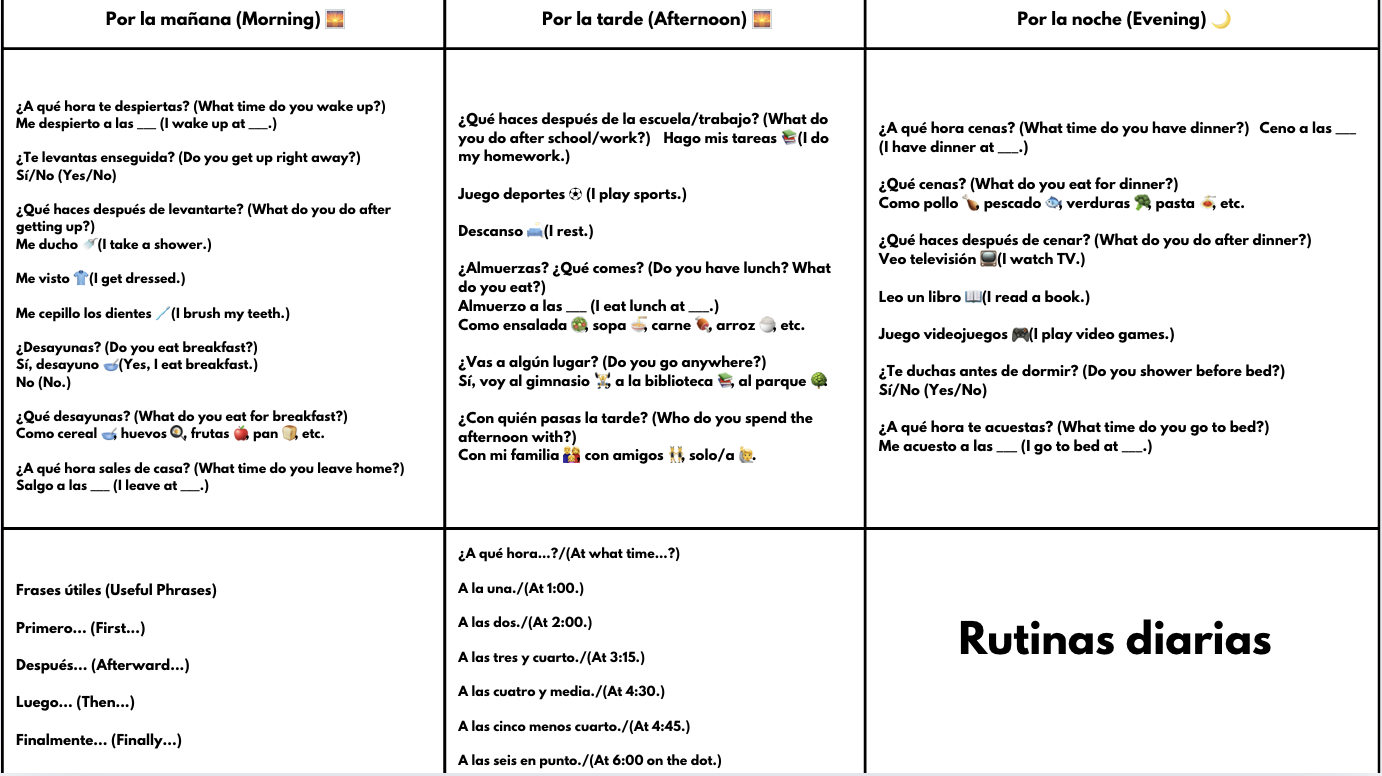
Game: Reflexive verb Connect 4
Connect 4: A fun way to master verb conjugations!
Objective: Be the first to get four correctly conjugated verbs in a row. Work from the bottom up.
Ways to play:
1. Whole class. Divide your class into two teams. I suggest uploading the document to Google Docs. Teams provide answers. Work from the bottom up, writing the correct verb forms in. Each team can be assigned a different font or color.
2. Small groups. Print the blank charts. Students play the same way, however you can assign one student to be the moderator. You give this student the answer sheet, and that way they can verify if the answer is correct. It’s a great way to study and get lots of verb practice.
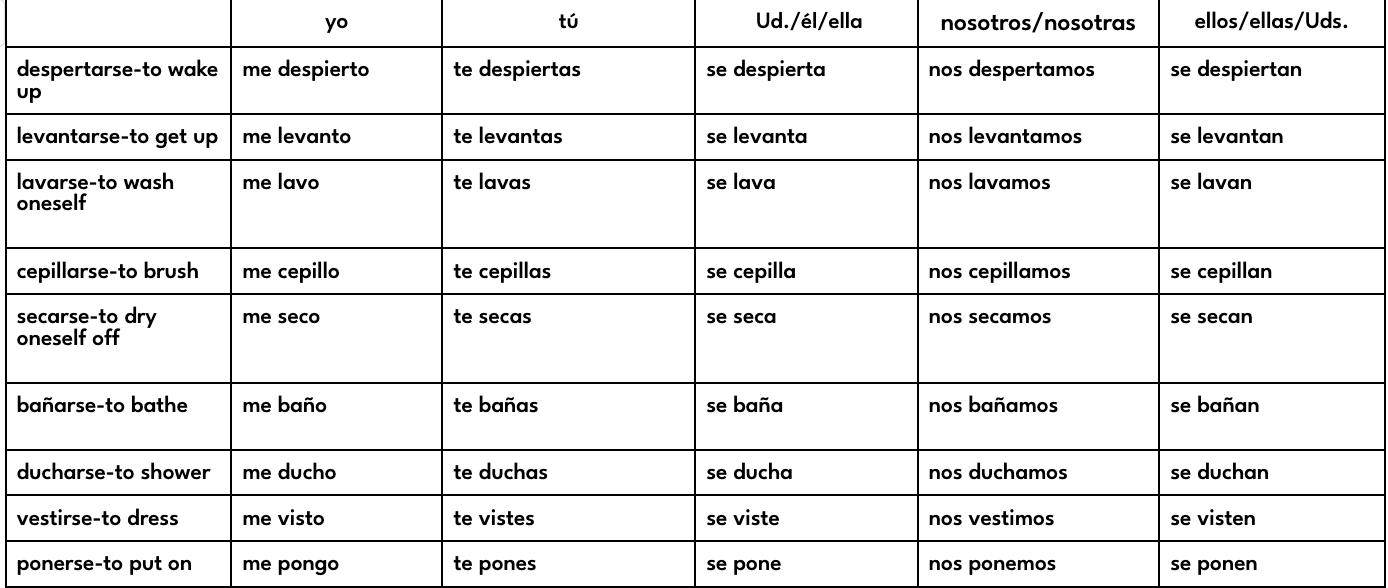
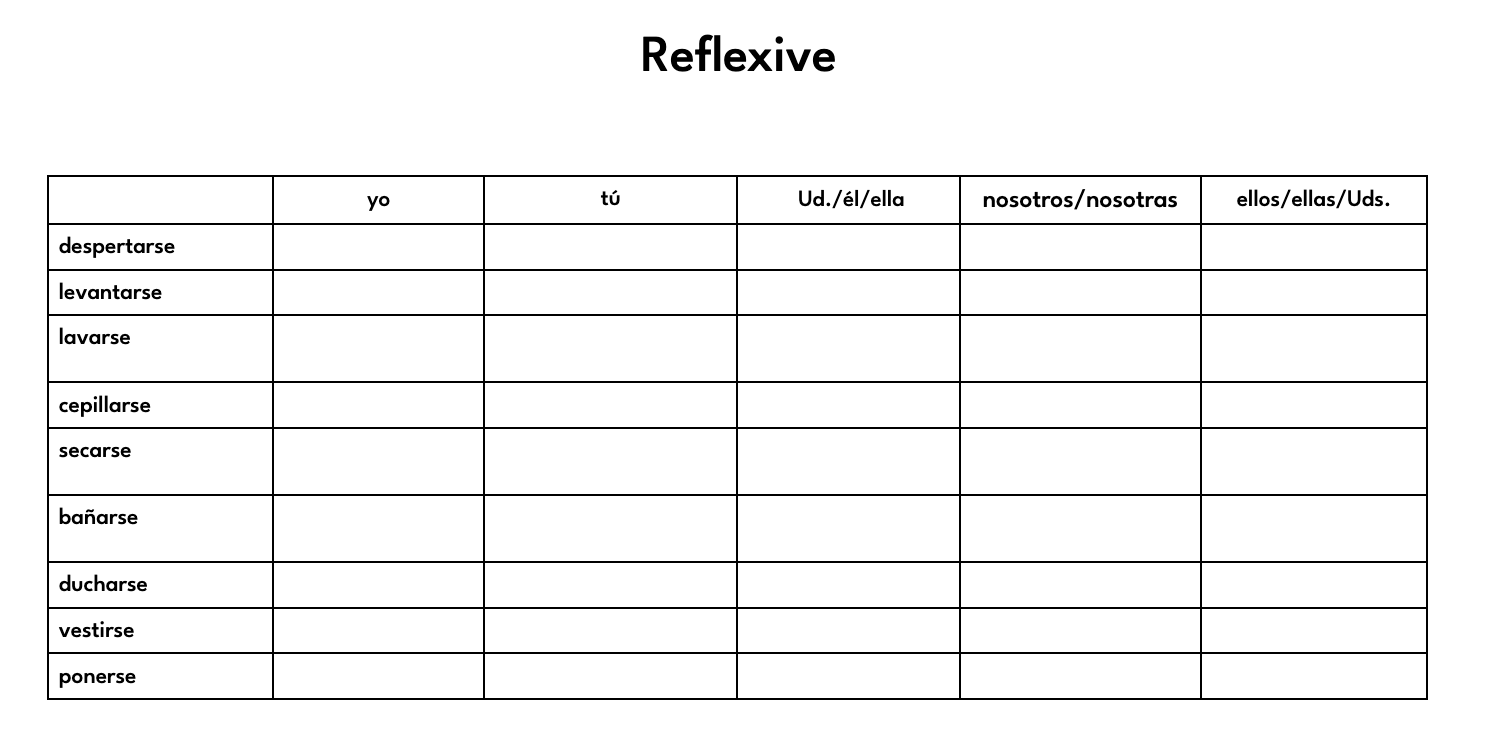
Exit Ticket: 3 sentences about your routine using reflexives
Lesson 2 – Reflexive Verbs in Context
Objective: I can talk about my daily routine using reflexive verbs in the present tense.
Text: Read about a daily routine
Mi Rutina Diaria
Mi nombre es Sofía y soy estudiante de secundaria en Madrid. De lunes a viernes mi rutina es bastante ocupada.
Normalmente, me despierto a las seis y media de la mañana. A veces estoy cansada y no quiero levantarme, pero tengo que hacerlo. Después, voy al baño y me ducho rápidamente. Luego, me visto con el uniforme de la escuela y me cepillo los dientes.
Antes de salir de casa, mi madre siempre prepara el desayuno. Yo me siento en la mesa y como pan con mermelada y bebo un vaso de leche. Después, me pongo la chaqueta y la mochila y camino a la parada del autobús escolar.
En la tarde, después de las clases, me relajo un poco en casa. A veces veo la televisión o escucho música. Más tarde, hago mis tareas y me preparo para el día siguiente.
Finalmente, por la noche, me acuesto a las diez y media. Casi siempre me duermo rápido porque estoy muy cansada. Esta es mi rutina diaria durante la semana.
Vocabulario Clave
| Español | English |
| despertarse | to wake up |
| levantarse | to get up |
| ducharse | to shower |
| vestirse | to get dressed |
| cepillarse los dientes | to brush one’s teeth |
| ponerse | to put on |
| sentarse | to sit down |
| relajarse | to relax |
| prepararse | to get ready |
| acostarse | to go to bed |
| dormirse | to fall asleep |
Preguntas de comprensión
1. ¿A qué hora se despierta Sofía?
2. ¿Qué desayuna normalmente Sofía?
3. ¿Cómo va Sofía a la escuela?
4. ¿Qué hace después de las clases?
5. ¿A qué hora se acuesta?
Reflexive Verb Centers (station rotation- Centers)
- Centers are commonplace in elementary school classrooms. They provide opportunities that are student-centered, foster lots of engagement, and can be used to learn anything.
- Centers provide lots of opportunities to master vocab and grammar. With a bit of initial prep, they can provide great opportunities for students to master anything that you’re teaching. You’re available to answer questions, problem solve and facilitate the activities.
- A few ideas that work with any set of grammar or vocabulary that you’re doing:
- Pictionary
- Charades
- Hangman
- Draw What I Say
- Organize your centers based on how much time students have available to spend in each center and how many different activities you want them to do. So for a class of 90 minutes, you might have four or five different centers for students to rotate through.)
- Activity: Hear and Circle (from Blaz, The Foreign Language Teacher’s Guide to Active Learning). Write a lot of
- Mini writing: Write about your afternoon routine (use the chat mat to help).
- Exit Ticket: Complete a reflexive verb chart for key daily actions (use the Connect 4 board above).
Lesson 3 – Present Tense Review: Regular & Irregular Verbs
Objective: I can use regular and irregular verbs to describe daily actions.
Text:
Verb review slides – regular & irregular
Un Día Típico pero Ocupado
Me llamo Andrés y soy estudiante de la preparatoria en México. Durante la semana, mi rutina es muy estricta porque tengo muchas responsabilidades.
Todos los días me despierto a las seis de la mañana, aunque normalmente me levanto diez minutos después porque me gusta quedarme en la cama pensando en el día. Luego, voy al baño y me lavo la cara para despertarme mejor. A veces me ducho por la mañana, pero si tengo prisa lo hago en la noche. Después de la ducha, me visto con ropa cómoda y me peino el cabello.
Antes de salir, siempre desayuno algo ligero. Normalmente me preparo un café con leche y un pan dulce. Mientras desayuno, hablo un poco con mi familia sobre nuestros planes del día.
Voy a la escuela en autobús y paso casi ocho horas allí. Cuando regreso a casa por la tarde, primero me relajo un rato: escucho música o me acuesto en mi cama a mirar el celular. Sin embargo, después de descansar, tengo que ser responsable. Me pongo a hacer la tarea, estudiar para los exámenes y ayudar en la casa.
Por la noche, ceno con mi familia y hablamos sobre cómo nos fue en el día. Luego, me ducho si no lo hice en la mañana y me pongo el pijama. Finalmente, alrededor de las once, me acuesto y casi siempre me duermo enseguida porque estoy muy cansado.
Aunque mi rutina parece aburrida, me gusta porque tengo un equilibrio entre mis estudios, mi familia y mi descanso.
Vocabulario Clave
| Español | English |
| lavarse la cara | to wash one’s face |
| prepararse | to get ready |
| peinarse | to comb one’s hair |
| acostarse (o-ue) | to go to bed |
| ponerse | to put on |
| relajarse | to relax |
| ducharse | to shower |
| vestirse (e-i) | to get dressed |
Preguntas de comprensión
1. ¿Qué hace Andrés antes de levantarse de la cama?
2. ¿Cuándo se ducha normalmente Andrés?
3. ¿Qué desayuna usualmente?
4. ¿Qué hace al regresar de la escuela antes de estudiar?
5. ¿A qué hora se acuesta Andrés normalmente?
6. ¿Por qué dice que su rutina no es aburrida?
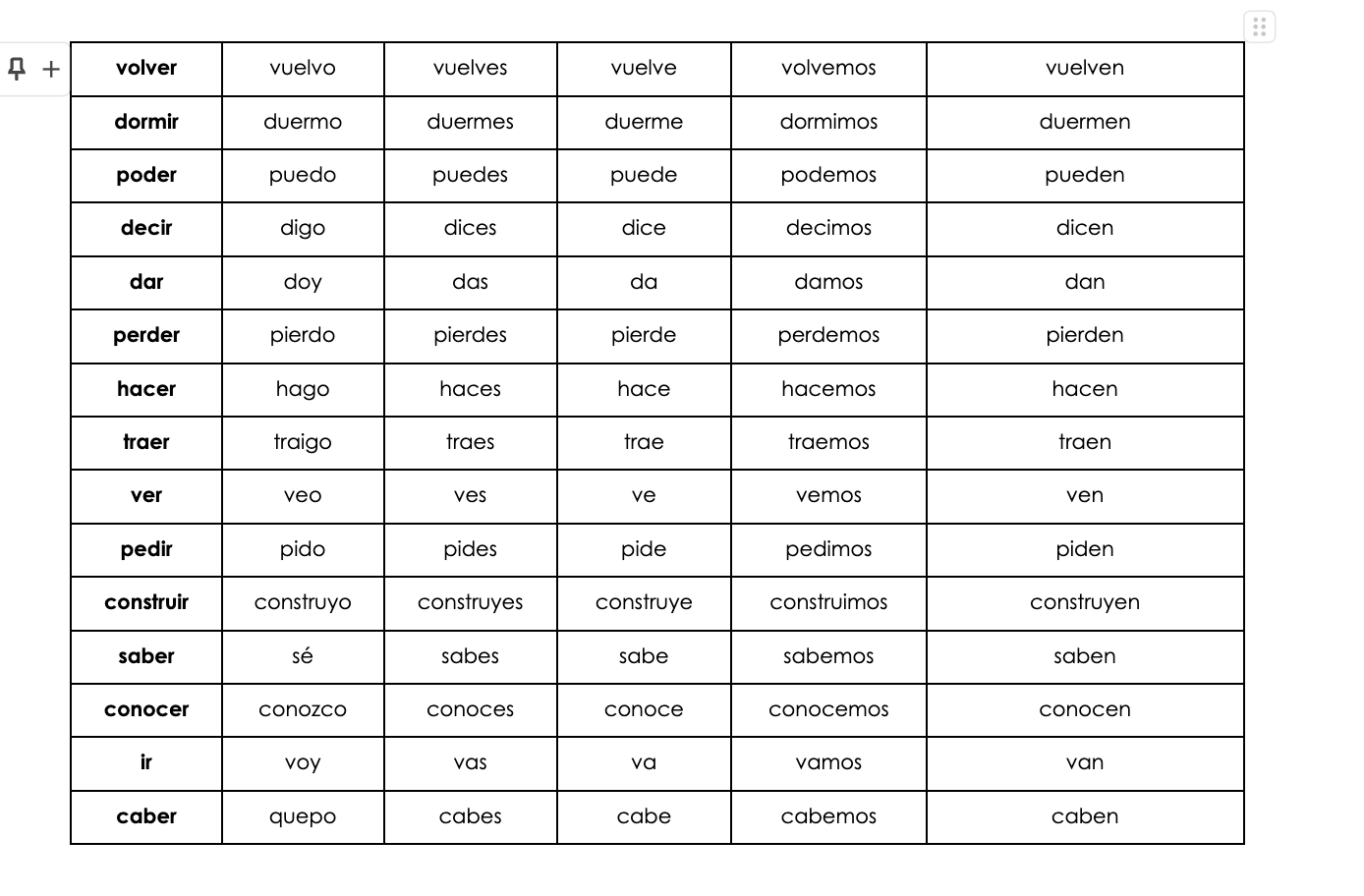
Group Game: Verb Conjugation Relay
Practice: Write about things you do daily
Lesson 4 – Describing a Day in My Life
Objective: I can write a short description of my day.
- Input: Video-https://youtu.be/HLwMeQ8QSHs?si=oq-M5TUmi_b3w7pk
Or
Or
- Writing: A Day in My Life
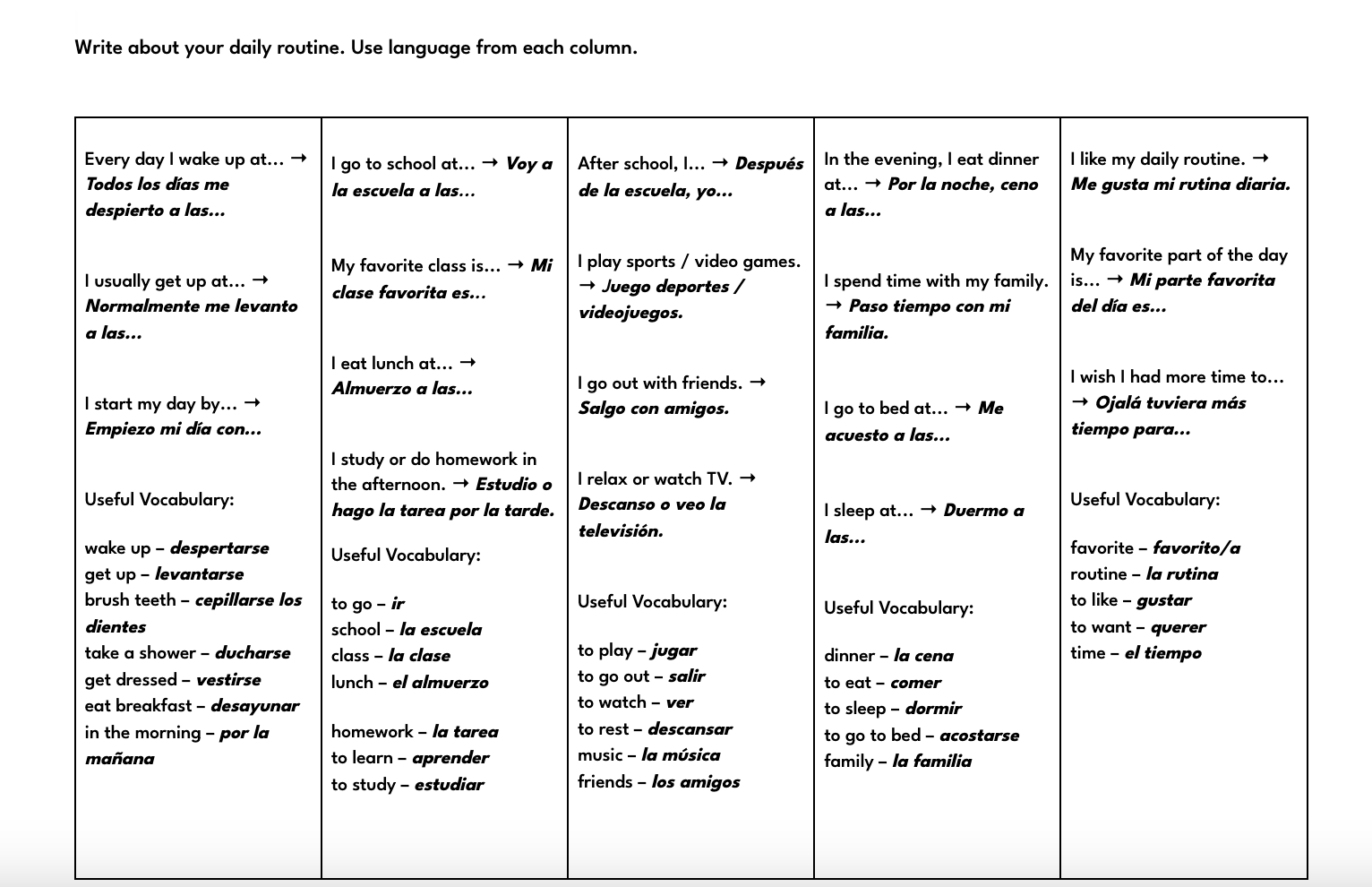
Peer Feedback: Swap drafts and review for verb use and clarity
Lesson 5 – School Subjects and Schedules
Objective: I can talk about school subjects and my class schedule.
Warm-up: Review telling time in Spanish
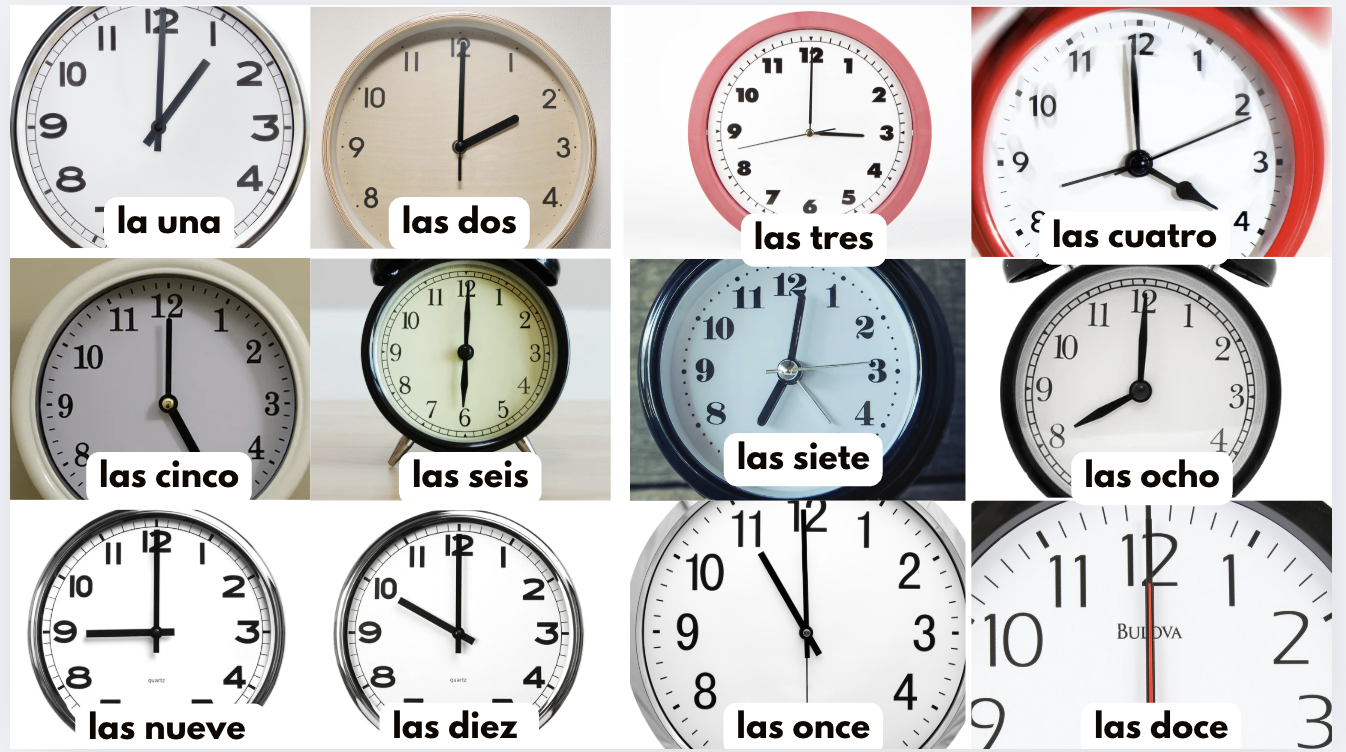
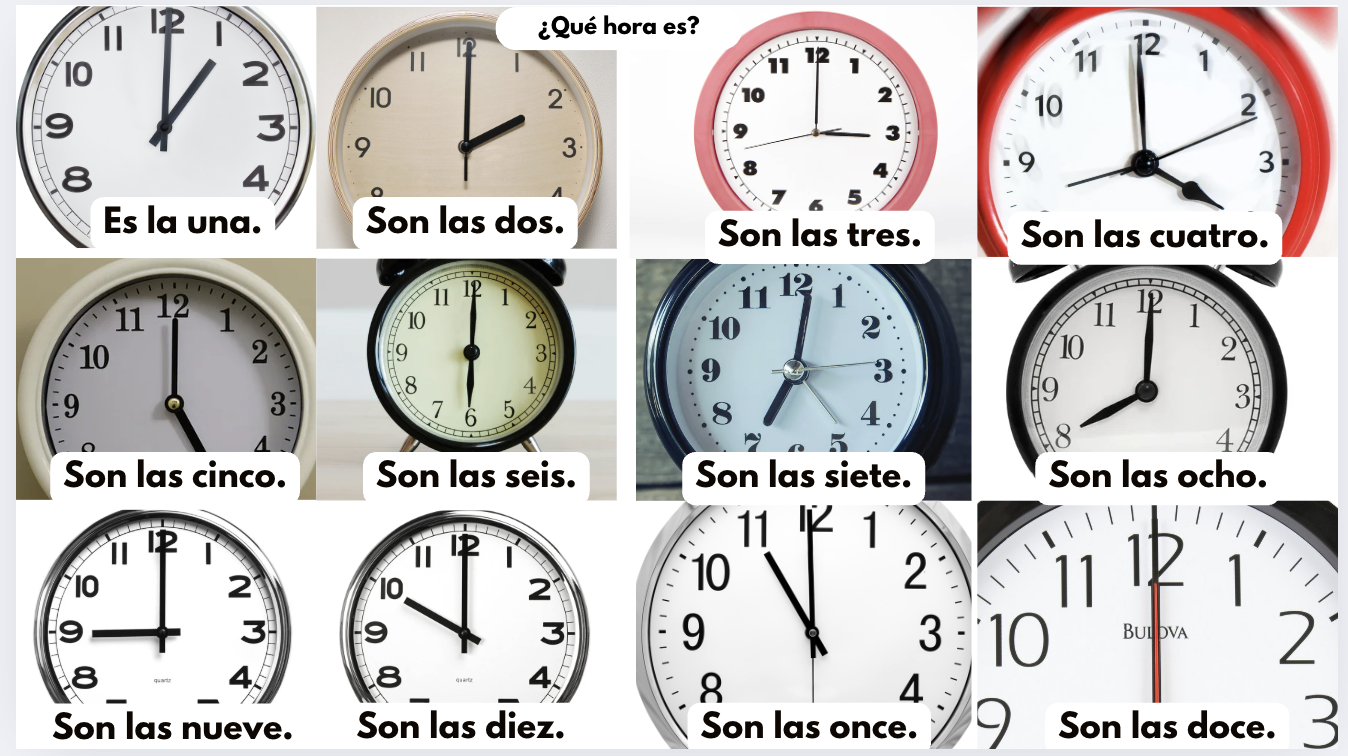
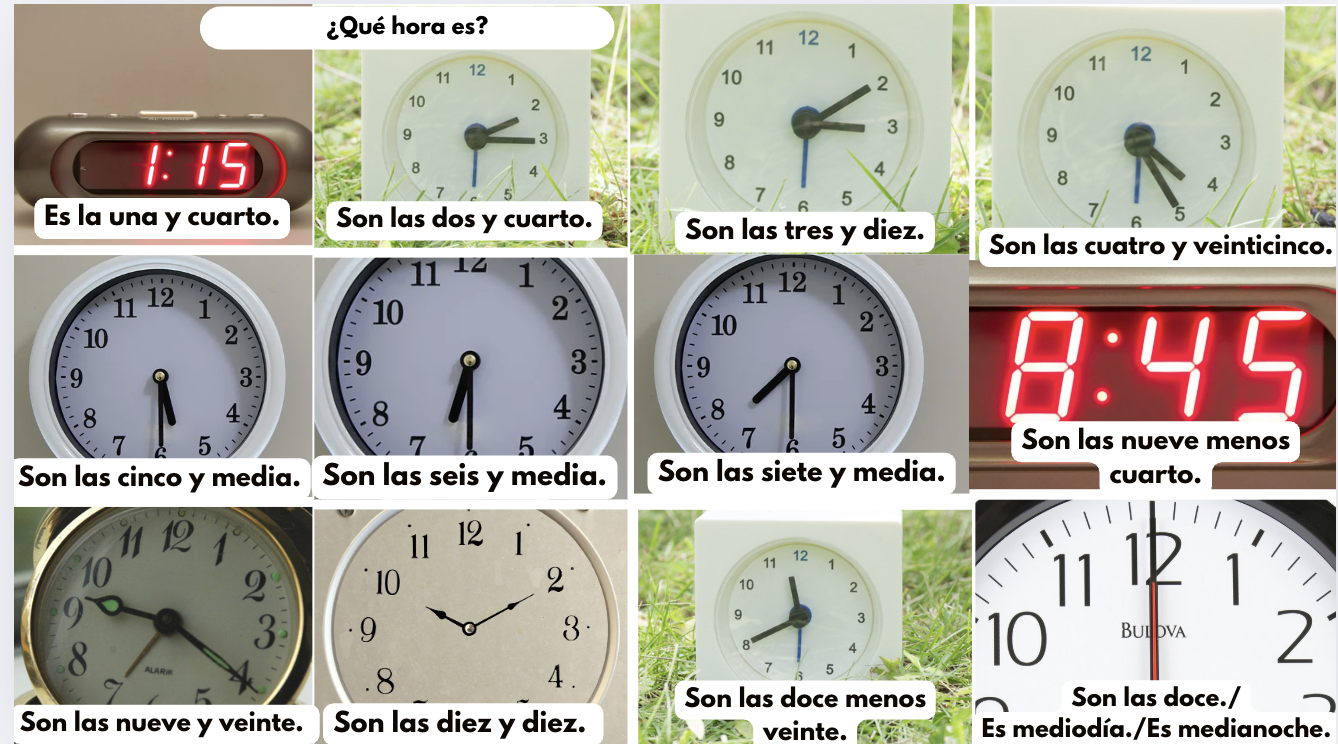
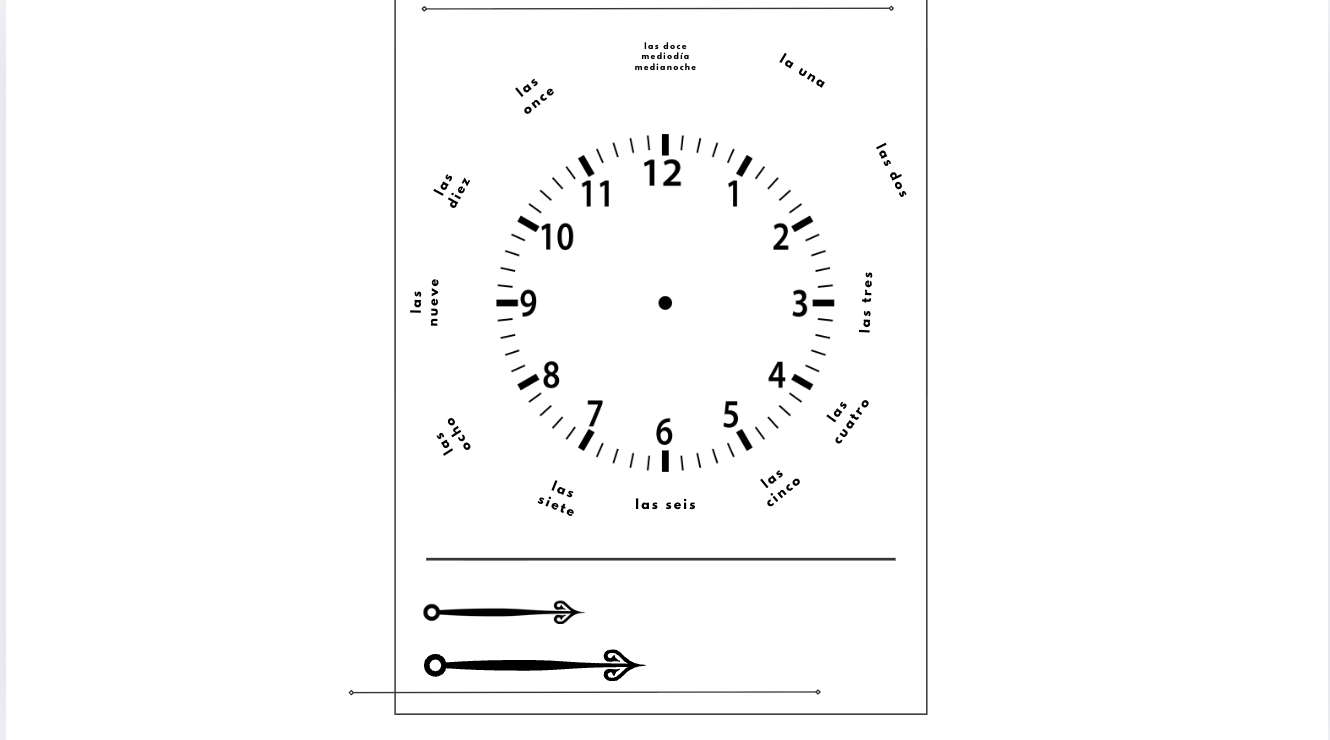
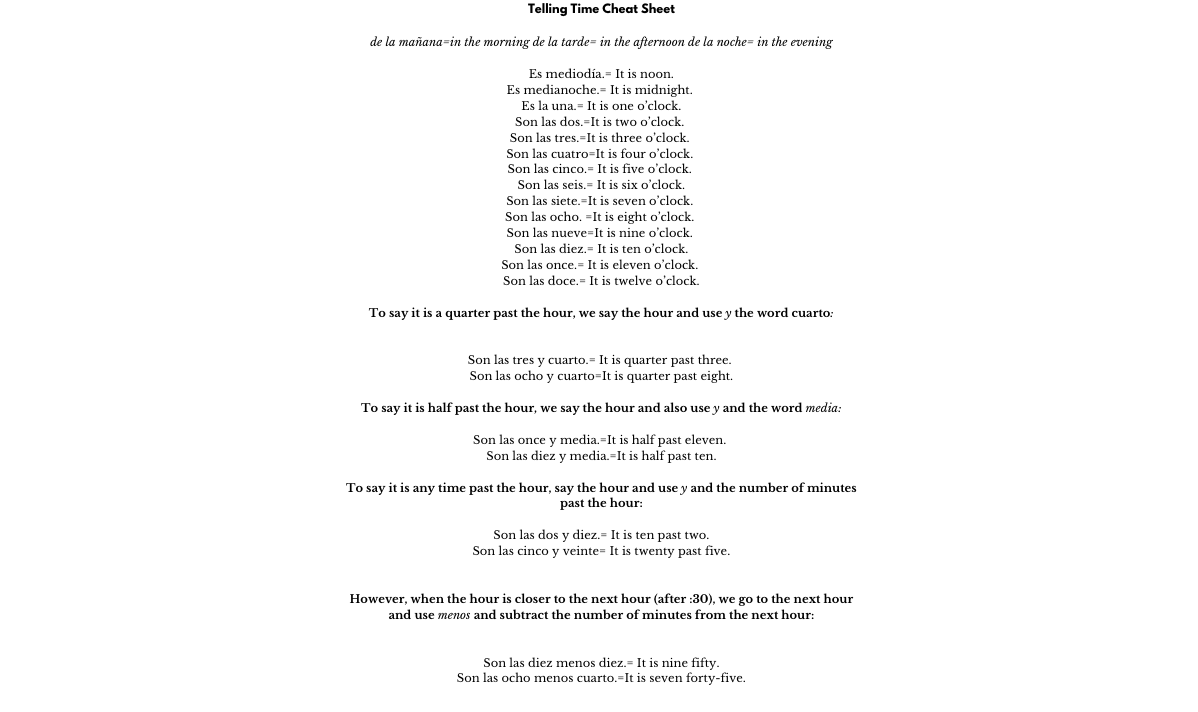
Input: School subjects vocabulary. Brainstorm and list on the board. Students sketch out schedules.
Partner Interviews: Compare your schedule with a classmate’s
Reading: Sample school schedules in Mexico

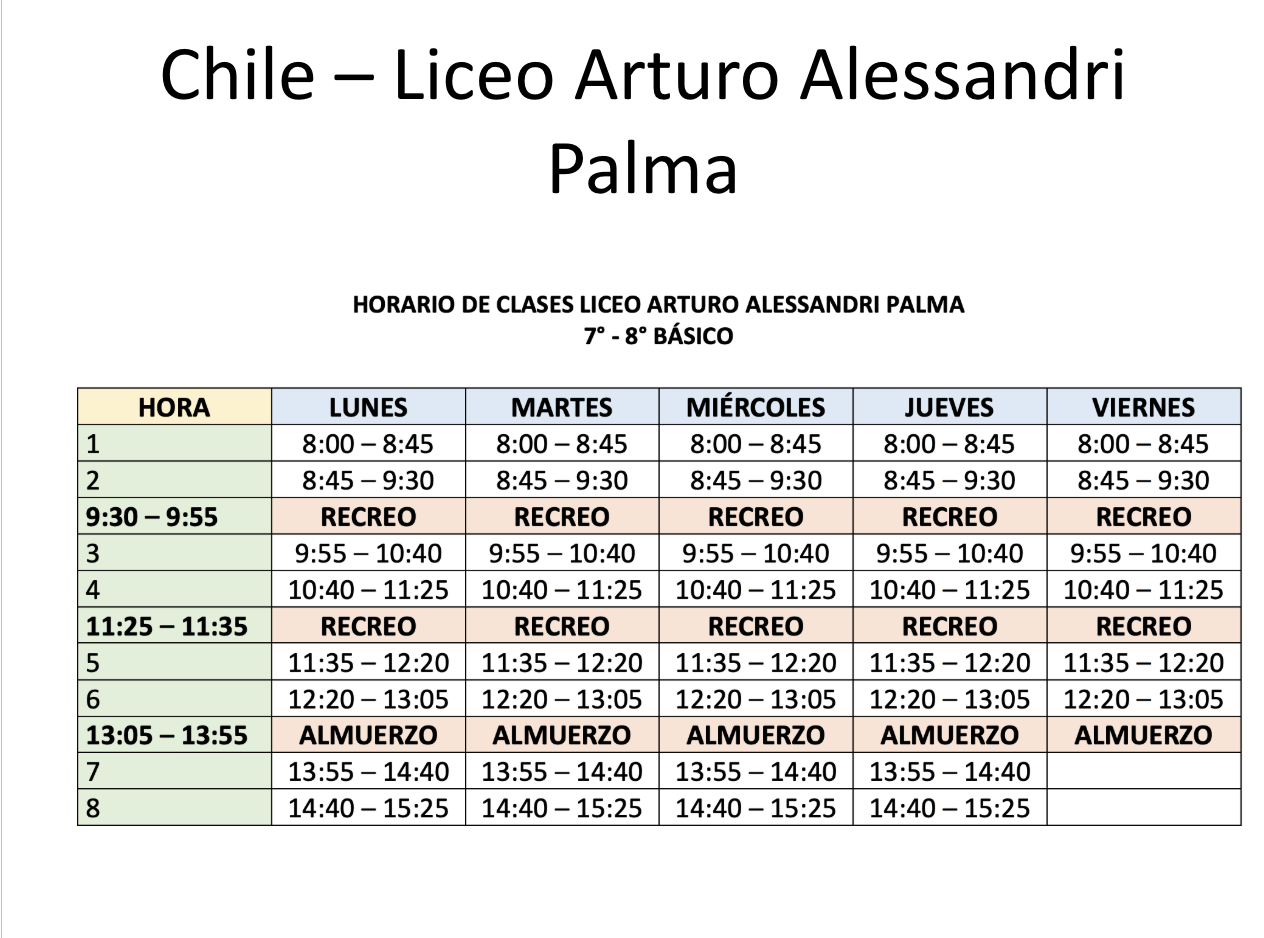
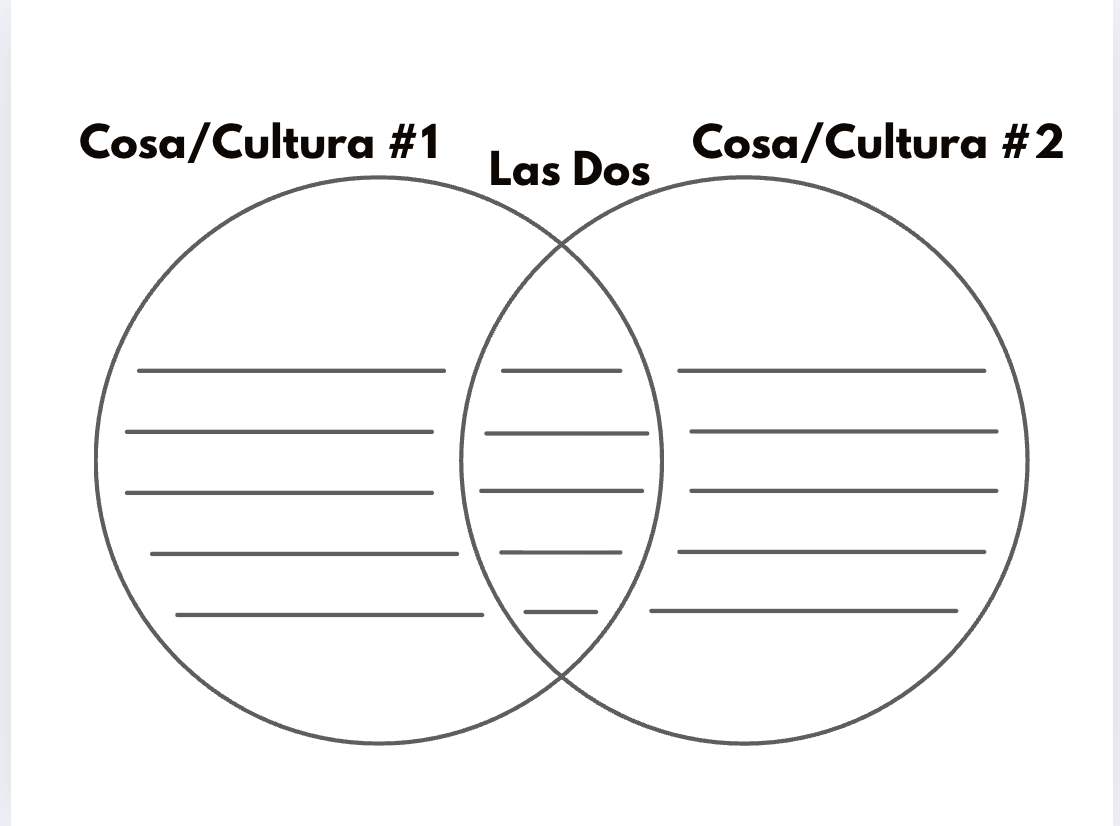
Exit: Write 3 differences between your schedule and one in Mexico
Lesson 6 – Community Vocabulary & Chat
Objective: I can identify and describe places in my community.
Video:
Chat Mat: Mi comunidad
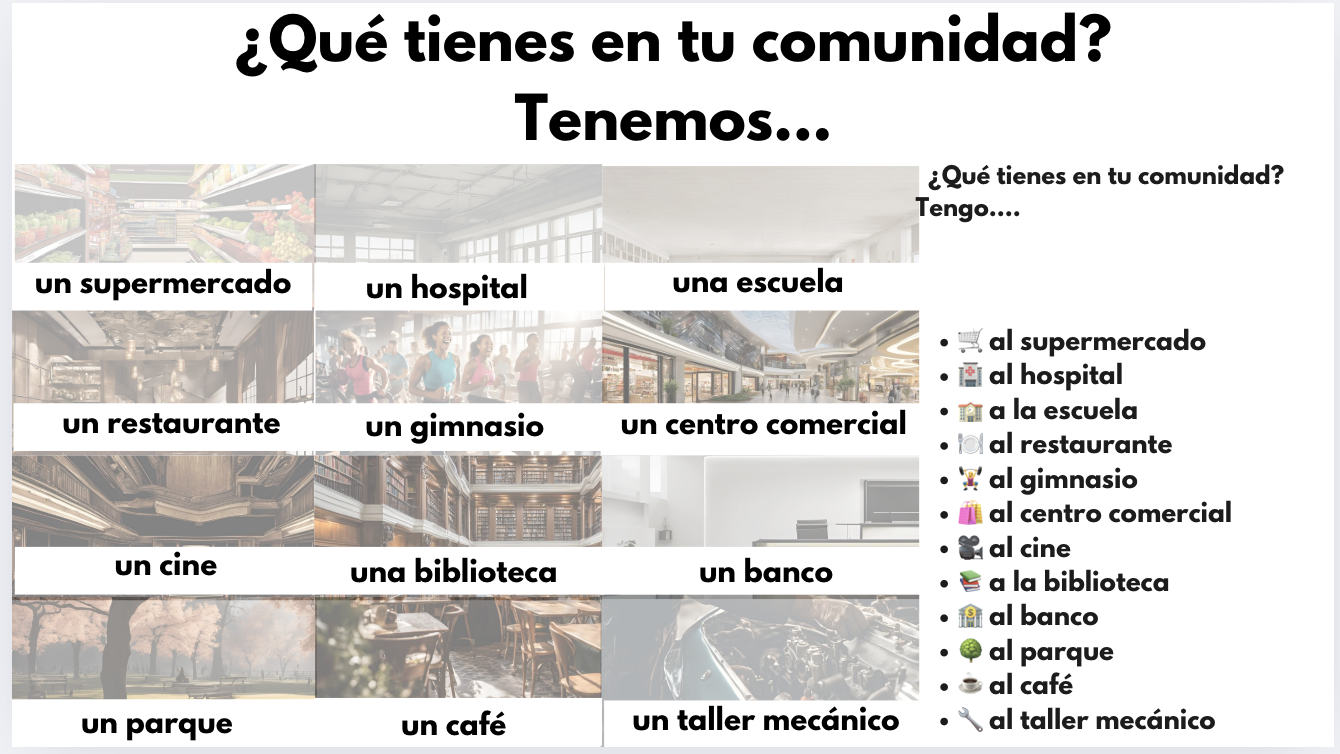
Chat Mat: Mi comunidad
Vocabulary: Places in the community (use visuals or slides)
Exit: Draw and label a simple map of your neighborhood. Write about it.
Lesson 7 – Community Map & Directions
Objective: I can describe what people do in different places in town.
Activity: Create a fake city in groups:
Fake City Project: ¡Bienvenidos a Mi Ciudad!
Objective: Students create a fictional city and use Spanish to give and follow directions within it.
Learning Goals:
Learn and use directional phrases in Spanish
Practice place vocabulary (lugares en la ciudad)
Create and present a map of an imaginary city
Speak and write in complete sentences in Spanish
Materials Needed:
Blank poster paper or Google Slides/Drawings
Markers / colored pencils / digital icons
Vocabulary reference sheet
City planning checklist (included below)
Project Instructions (Student Version):
Parte 1: Diseña tu ciudad
- Nombra tu ciudad (¡Sé creativo! Ej: Ciudad Fantástica, Playa Verde)
- Dibuja al menos 10 lugares importantes, como:
- la escuela
- el hospital
- el cine
- la panadería
- la estación de policía
- el parque
- el museo
- el restaurante
- la tienda
- la biblioteca
- Usa calles con nombre y organiza la ciudad con una cuadrícula clara.
Parte 2: Da direcciones
- Escribe 5 direcciones completas para moverse por la ciudad.
Por ejemplo:“¿Cómo llego a la biblioteca?”
“Desde el parque, camina dos cuadras, gira a la derecha y está al lado de la panadería.” - Usa frases como:
- Gira a la derecha
- Cruza la calle
- Está cerca/lejos de…
- Sigue recto
- Está entre __ y __
Parte 3: Presenta tu ciudad (Opcional Oral Presentation)
Stand up and guide your classmates on a tour:
“Bienvenidos a Ciudad Sol. Aquí está el supermercado. Desde aquí, dobla a la izquierda para llegar a la estación de tren…”
Rubric Checklist:
| Elemento | Puntos |
| Mapa con 10+ lugares | 10 |
| Nombre creativo y calles | 5 |
| 5 oraciones con direcciones | 10 |
| Uso correcto del vocabulario | 5 |
| Presentación clara y visual | 5 |
| Total | 35 |
After the city is complete, practice directions:
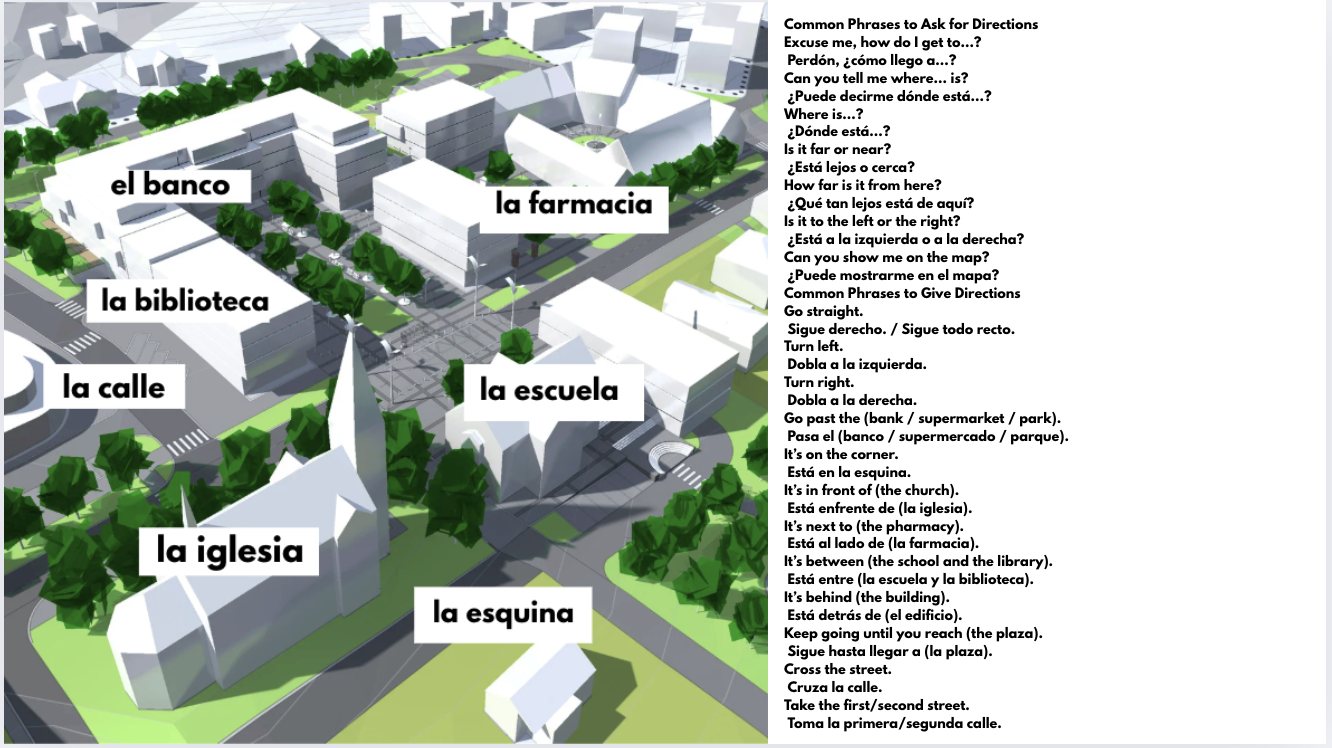
Now, students follow your directions from one place to another.
Finally, using the guide above, students give directions to each other.
Writing: Short paragraph about your neighborhood OR directions from one place to another.
Lesson 8 – Cultural Comparison: School & Daily Life
Objective: I can compare school life and routines across cultures.
Input: Reading – Typical school lunches
Lectura cultural: Almuerzos escolares en el mundo
Italia Los estudiantes suelen comer comidas calientes preparadas en la escuela, como pasta, verduras frescas, carne o pescado, y fruta de postre.
Preguntas de comprensión:
- ¿Qué tipo de comida comen los estudiantes en Italia?
- ¿La comida es fría o caliente?
Estados Unidos Los almuerzos escolares a menudo incluyen una bandeja con pizza, hamburguesas, puré de papas, verduras cocidas y leche o jugo.
Preguntas de comprensión:
- ¿Qué bebidas son comunes en los almuerzos escolares en Estados Unidos?
- Nombra dos comidas típicas del almuerzo escolar.
Rusia Es común que los almuerzos escolares incluyan sopa (como borsch), pan, un plato principal con carne y papas, y té caliente.
Preguntas de comprensión:
- ¿Qué tipo de sopa es común en Rusia?
- ¿Qué bebida caliente toman los estudiantes?
Corea del Sur Los estudiantes reciben una comida balanceada con arroz, sopa, kimchi, proteínas como pescado o pollo, y verduras variadas.
Preguntas de comprensión:
- ¿Qué alimento fermentado es típico en Corea del Sur?
- ¿Qué tipos de proteínas se mencionan?
España Muchos estudiantes regresan a casa a almorzar, pero en las escuelas que ofrecen comida, los menús incluyen lentejas, arroz con verduras, pescado o pollo, pan, fruta y agua.
Preguntas de comprensión:
- ¿Qué hacen muchos estudiantes en lugar de almorzar en la escuela?
- Menciona dos comidas que se incluyen en los menús escolares en España.
Video:
Poster or writing: Compare with your own routine (school schedule) or school lunches.
Lesson 9 – Performance Task & IPA
Objective: I can demonstrate my ability to talk about daily life and community.
Integrated Performance Assessment (IPA):
Interpretive: Read about a student’s school schedule in Ecuador
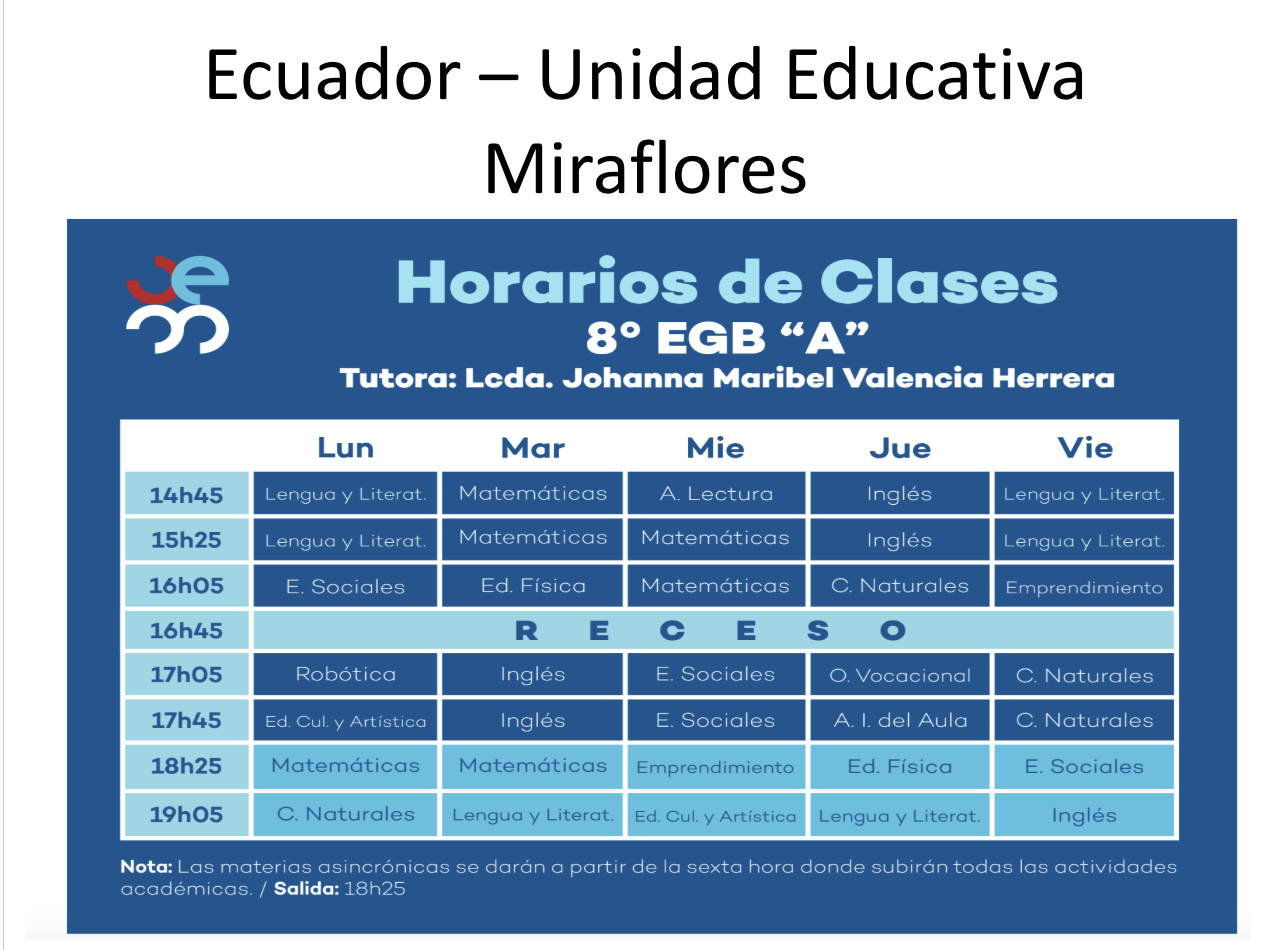
Interpretive: Read about a student’s school schedule in Ecuador
Interpersonal: Ask and answer questions about your daily routine with a partner
Presentational: Write a paragraph about your daily routine (include reflexive verbs)
| I wrote an opening paragraph introducing my topic. |
| I included 10 routines with correct reflexive verbs. |
| I used transition words (first, next, then, finally, etc.). |
| I asked 2 questions in Spanish at the end. |
| I wrote a conclusion that wraps up my post. |
| I checked spelling and grammar. |
| My writing is neat and legible. |
| I followed the instructions and included all parts. |
Reflexive Verb Chart included as part of assessment
Optional Project Extension:
Create a brochure or video guide for a Spanish-speaking town you’d like to visit. Include:
- Key community places
- Activities to do there
- Cultural highlights
- Use ir a, reflexive verbs, and descriptive vocabulary
OR
Try this project: Mini-Project: A Celebrity’s Daily Routine
Objective
Students will demonstrate their understanding of reflexive verbs and transitional words by creating a poster or digital slide presentation describing a celebrity’s daily routine.
Task Description
Choose a celebrity from any Spanish-speaking country or an international figure you like. Imagine you are describing their typical day — from morning to night — using complete sentences in Spanish.
You will create either:
a poster (handmade or digital), or
a printable slide presentation (Google Slides, PowerPoint, etc.).
Each sentence should include a reflexive verb (when appropriate) and use transitional words to show sequence.
Project Requirements
Your project must include:
- At least 10 daily activities written in Spanish.
- Each activity must include a reflexive verb.
- Example: Shakira se despierta a las siete de la mañana.
- Transitional words to organize the routine.
- Examples: Primero, luego, después, más tarde, finalmente, por la noche…
- Visuals or images of the celebrity performing daily activities.
- Creative layout that is neat, colorful, and easy to read.
- Title and short introduction (2–3 sentences) in Spanish about the celebrity.
Useful Reflexive Verbs
despertarse, levantarse, ducharse, vestirse, maquillarse, afeitarse, cepillarse, acostarse, relajarse, prepararse, bañarse
Spanish 2 – Unit 1 Handout: Daily Routine, School, and Community
Key Vocabulary
Daily Routine Verbs (Reflexive):
levantarse – to get up
ducharse – to shower
vestirse – to get dressed
cepillarse – to brush
despertarse – to wake up
acostarse – to go to bed
lavarse – to wash (oneself)
School Subjects and Schedules:
las matemáticas – math
la historia – history
la ciencia – science
el inglés – English
el español – Spanish
el arte – art
la educación física – physical education
el horario – schedule
la clase – class
Chores and Household Items:
barrer – to sweep
sacar la basura – to take out the trash
lavar los platos – to wash the dishes
limpiar – to clean
cocinar – to cook
el fregadero – sink
la escoba – broom
Places in the Community:
la biblioteca – library
el supermercado – supermarket
la estación de policía – police station
la escuela – school
el parque – park
el hospital – hospital
Grammar Focus
1. Present Tense Review
AR verb example (hablar): yo hablo, tú hablas, él/ella habla, nosotros hablamos, ellos hablan
ER verb example (comer): yo como, tú comes, él/ella come
IR verb example (vivir): yo vivo, tú vives, él/ella vive
Common Irregular Verbs: ir – yo voy, tener – yo tengo, hacer – yo hago
2. Reflexive Verbs
Use reflexive pronouns (me, te, se, nos, se):
Yo me levanto a las seis.
Ella se ducha por la mañana.
Sentence Starters for Practice
Yo me levanto a las…
En mi casa, yo tengo que…
En mi comunidad, hay…
Mi rutina diaria incluye…
Yo estudio…
Yo voy a…
5 Weeks of No and Low Prep Fun
Need quick, engaging activities for your class? This free guide includes 25 no-prep and low-prep ideas to save time while keeping students excited about learning.
Download your free copy now.
